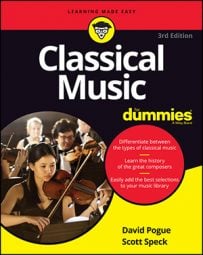Free jazz constituted one jazz branch that flowed during the 1960s. Another stream blended jazz with rock, funk, and other styles and became known as fusion or electric jazz, which hit its prime during the late '60s and early '70s.
Although some fans and critics dismiss fusion for not being genuine jazz, it contains all the hallmarks. Musically, there's no question: it's jazz. Fusion swings and includes extensive improvisation and features soloists with distinctive voices. In fact, many of the first musicians to play fusion had played more traditional acoustic jazz before they went electric.
Miles Davis
Miles Davis (1926–1991), who played unplugged bebop and cool jazz during the 1940s and 1950s, teamed his trumpet with electric instruments and utilized elements from funk and rock. His bandmates included electric guitarists such as John McLaughlin and jazz pianists like Herbie Hancock and Chick Corea — with Davis they played electric keyboards, but Corea later returned to acoustic piano, while Hancock played both acoustic and electric.
Playing his trumpet through electronic effects, Davis got a haunting, echoey sound, and he sprayed delicate lines of improvised melody against the canvas of throbbing, pulsing sounds provided by his bands.
Throughout his career, Davis had a knack for discovering raw talent. Countless musicians who participated in Davis's early electric sessions went on to play essential parts during the next phase of jazz fusion. These musicians included
- Chick Corea, Herbie Hancock, and Joe Zawinul, keyboard players
- Wayne Shorter, saxophonist
- John McLaughlin, guitarist
- Ron Carter, acoustic and electric bassist
Davis's 1960s albums In a Silent Way (Sony) and Bitches Brew (Sony) started a revolution by harnessing rock's electric guitars and funk's electric bass rhythms and drums to Davis probing, amplified trumpet. It was the first time a veteran jazz musician embraced electric music.
Other jazz fusioneers
In addition to Davis's key recordings, hunt down some of these other players at your local music store:
- Chick Corea (born 1941): Corea played with Miles Davis and went on to fusions of his own, leading the group Return to Forever. Light As A Feather (Polygram) blends Corea's electric piano with Brazilian rhythms and Flora Purim's light, airy vocals. Hymn of the Seventh Galaxy (Polygram) takes fusion in a more electrifying rock direction.
- The Crusaders: During the 1970s, parties popped with the Crusaders just as much as with hard rock. Scratch (MCA) is an electric jazz-funk party classic.
- Herbie Hancock (born 1940): Headhunters (Columbia) is one of Hancock's all-time top electric jazz/funk recordings, but his 1974 Thrust (Priority), which includes the beautiful song "Butterfly," is equally impressive.
- Freddie Hubbard (born 1938): This talented trumpeter (and flugelhorn player) made one of my favorite electric jazz albums. Red Clay came out in 1970 and captured my attention with its spare arrangements and Hubbard's mellow flugelhorn solos.
- John McLaughlin (born 1942): McLaughlinformed the Mahavishnu Orchestra — an electrifying jazz/rock fusion band, and its albums Inner Mounting Flame (Columbia) and Birds of Fire (Columbia) are electric jazz classics.
- Grover Washington, Jr. (born 1943): On a mega-watt system, saxman Washington's 1975 Mister Magic (Motown) will split your eardrums. It's one of the most important albums to merge jazz with funk and soul — great solos, rock-solid rhythms.
- Weather Report: Led by keyboardist Joe Zawinul and saxman Wayne Shorter, this electric jazz group really soared after bassist Jaco Pastorius came aboard. Black Market (Columbia) makes my A-list of electric jazz.

